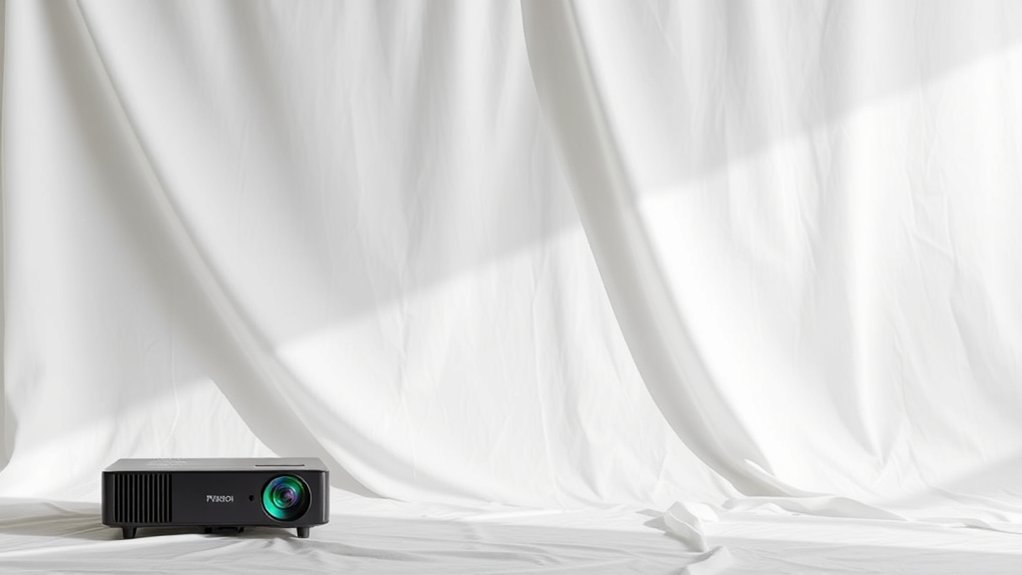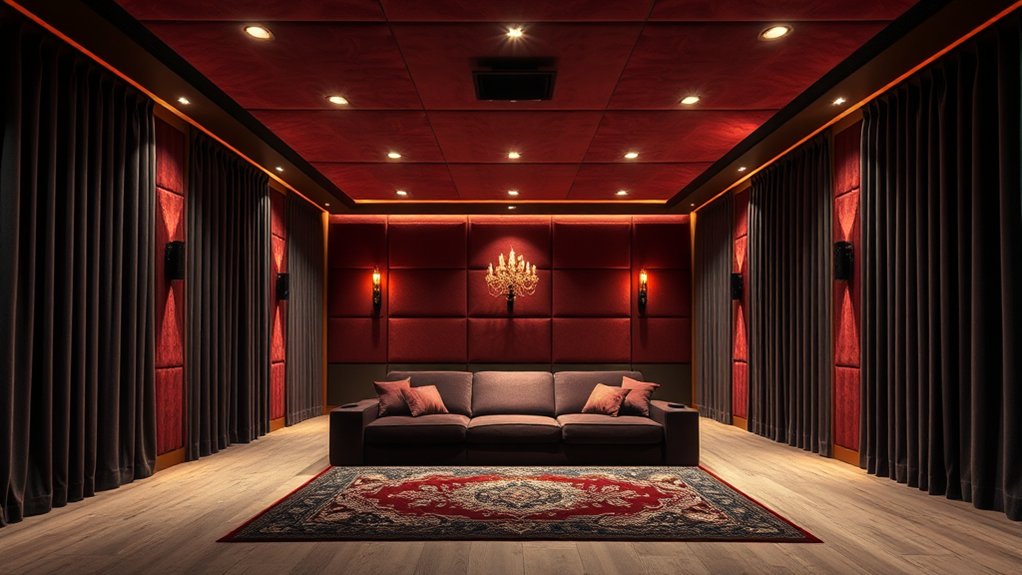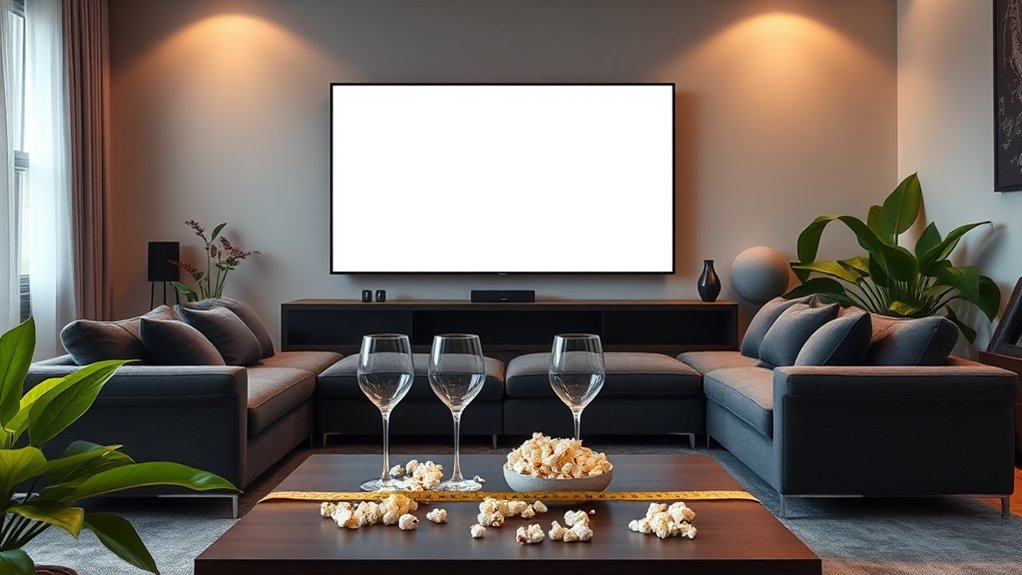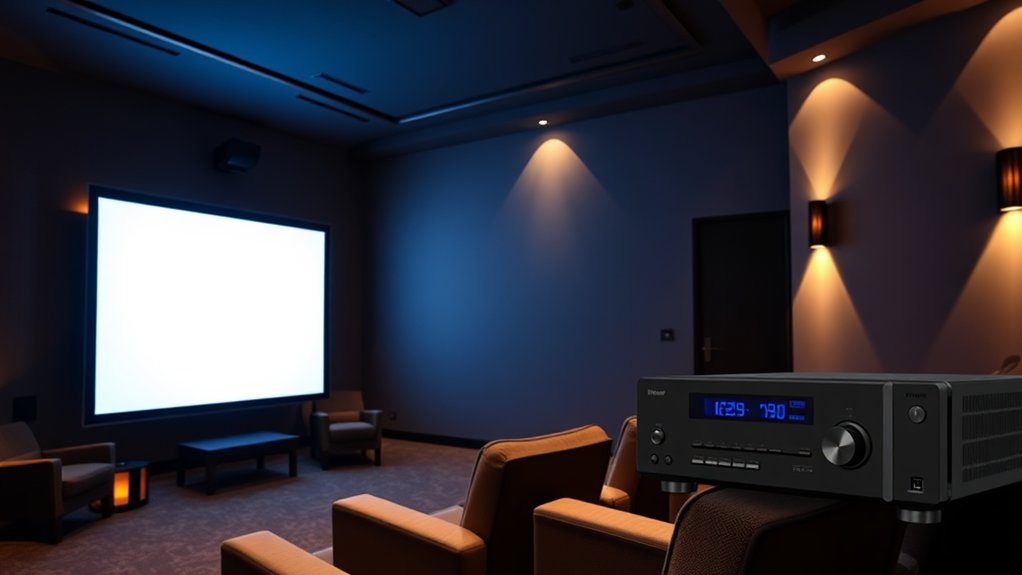White fabric is perfect for budget screens since it’s affordable, widely available, and provides excellent image quality. With its high reflectivity and smooth surface, it guarantees bright, clear visuals whilst minimizing glare. Plus, it’s easy to source, as cotton and polyester are abundant. Its lightweight nature likewise makes installation a breeze. Think of it as a reliable canvas; whether you’re hosting a movie night or a presentation, white fabric adapts to your needs effortlessly. Curious about how it fits various applications?
Key Highlights
- White fabric is cost-effective, requiring fewer dyes and minimal production challenges, which lowers overall screen material costs.
- Its high reflectivity enhances projected image brightness while preserving true colors for an accurate viewing experience.
- Easily sourced, white fabric is abundant, resulting in lower prices due to efficient mass production and logistics.
- The lightweight and durable nature of white fabric allows for easy installation and resistance to creasing or yellowing over time.
- Customizability ensures white fabric can be tailored for various screen sizes and designs, meeting diverse user needs.
Cost-Effectiveness of White Fabric
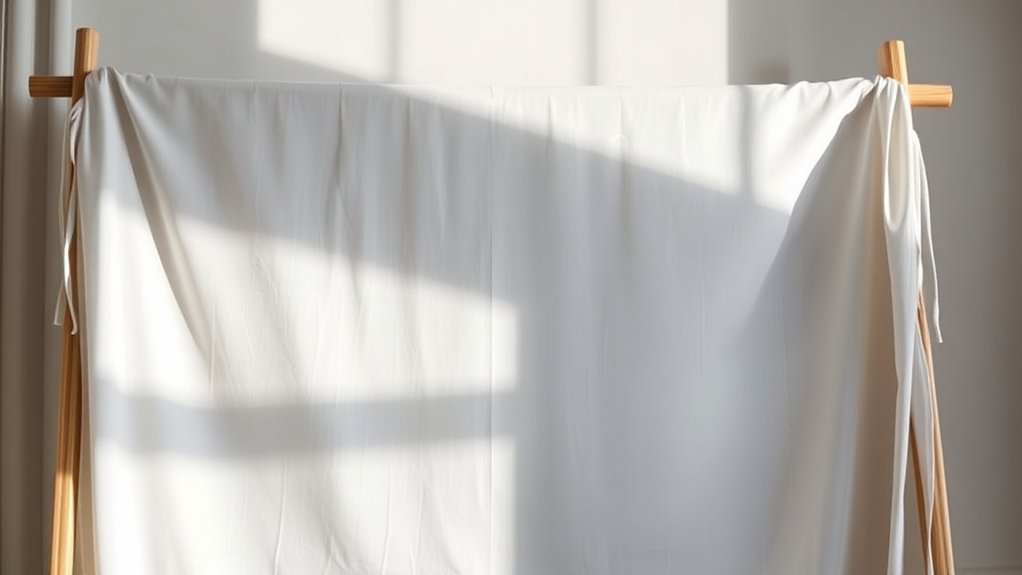
When you’re looking for a budget-friendly option for screen materials, the cost-effectiveness of white fabric can’t be overlooked—after all, who doesn’t want the best bang for their buck?
White fabric shines in affordability as it typically requires fewer and less expensive dyes, thereby cutting raw material expenses. Since the overall project cost is impacted by the kind of garments being printed, production processes for this fabric are streamlined and efficient, with minimal pre-treatment and fewer quality control challenges, you can save considerably on labor costs too. Moreover, its ability to enhance overall image quality means that you can achieve a vibrant viewing experience at a fraction of the cost compared to more complex materials.
You’ll find bulk procurement of white fabric is cheaper owing to high demand among mass-produced items. Plus, its compatibility with budget screen technologies means you can maximize your investment without breaking the bank on costly materials.
Visual Performance and Image Quality
Visual performance and image quality are critical factors to contemplate regarding choosing a budget screen material like white fabric. The brightness of your projected images can skyrocket since white fabric reflects ambient and projector light evenly, which helps maintain image clarity. Plus, its smooth surface minimizes glare and distortion—no one likes a distracting hot spot, right? As far as color accuracy goes, white fabric shines by preserving true colors without bias, ensuring your visuals look just as they should. And don’t forget about the wide viewing angles! It’s like inviting everyone in the room to enjoy the show, rather than leaving them peering at a dimly lit corner. Fundamentally, white fabric offers a perfect blend of performance and quality for budget setups. Additionally, many affordable options still provide impressive acoustic performance, making white fabric a versatile choice for home theaters. The optimal use of white fabric screens can significantly enhance viewing experiences in both small and large spaces.
Availability and Accessibility
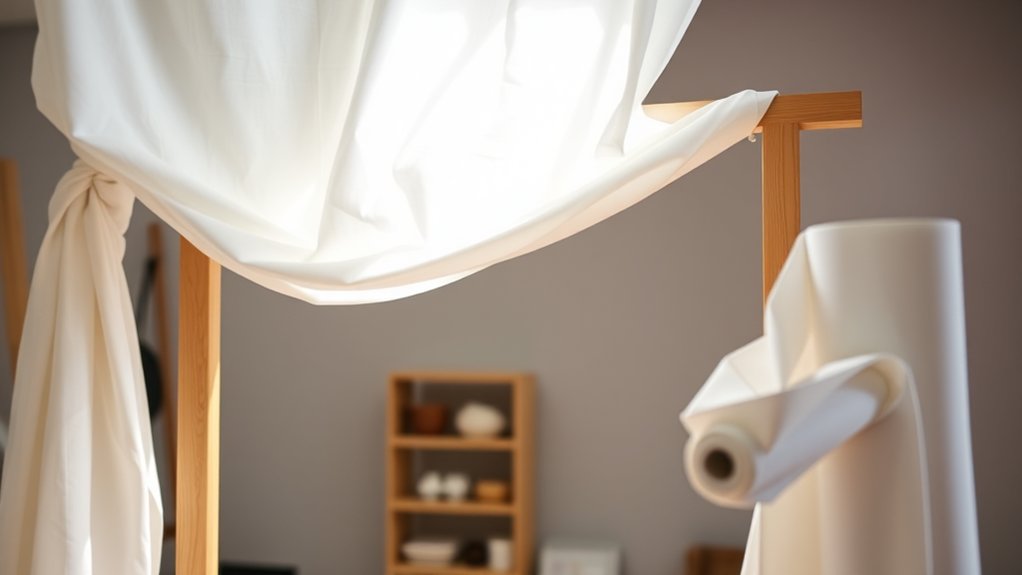
Availability and accessibility are crucial in the world of budget screens, especially when you consider that white fabric is a readily attainable resource.
With cotton and polyester being among the most commonly produced fibers globally, sourcing white fabric is easier than pie at a bake sale. You have around 25 million tons of cotton produced each year—much of it naturally white—coupled with polyester, which often comes in white as the default color. This abundance means lower costs for you, as bulk availability allows manufacturers to produce quickly and efficiently. Furthermore, many manufacturers benefit from advanced audio technologies that optimize production efficiency. Plus, the sturdy logistics networks guarantee timely deliveries, making it a breeze to find the right fabric for any screen project you might’ve in mind! Moreover, this availability aligns with the notion of data accessibility in manufacturing, demonstrating how abundant resources can streamline production processes.
Material Characteristics and Screen Functionality
The choice of white fabric for budget screens isn’t just about cost—it’s also about how those materials perform when you finally set up for that big presentation or movie night.
White fabric offers high reflectivity, efficiently returning projected light without creating glaring hot spots. This uniform diffusion guarantees your images are crisp, with accurate colors that pop without losing contrast.
Plus, the matte finish helps reduce glare, which we all appreciate during those long movie marathons. With a flexible, durable construction, these screens resist creasing and yellowing, keeping them looking fresh for years.
And who wouldn’t want a screen that supports sharp HD, even 4K images when allowing viewing from nearly every seat in the room? Sounds like a win-win!
Customizability and Adaptability
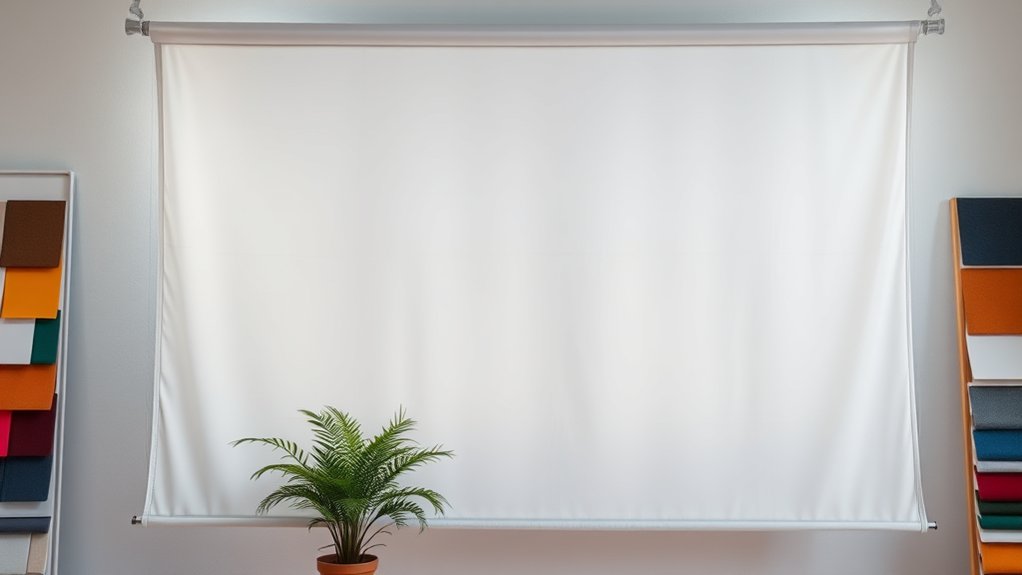
Though you might think that a budget screen limits your options, the truth is that white fabric shines regarding customizability and adaptability. You can easily cut and sew it to fit various sizes and shapes, accommodating everything from standard frames to unique designs—who knew a budget screen could support your creative whims?
Its lightweight nature allows for tight curves, ensuring a smooth finish without unsightly wrinkles. Plus, you can customize its appearance with printed graphics or bold colors—think of it as your blank canvas!
Layer additional textures or treatments to improve aesthetics, and you’ve got a versatile screen that evolves with your needs and events. So, why limit yourself? White fabric really is the go-to choice!
Practical Considerations for Use
Concerning the use of white fabric for budget screens, one must consider several practical aspects to guarantee a smooth experience.
First, lightweight materials like cotton sheets make handling and installation easier, but they too need proper storage to avoid mildew. Remember, if dampness sneaks in, you may as well consider your screen an expensive sponge!
Although white fabric is cost-effective, be mindful of its durability—cheaper options can fade or stain. On the flip side, high reflectivity improves image brightness without special coatings, making colors pop during presentations.
While budget-friendly, cheap white fabric screens may fade or stain; however, their high reflectivity enhances image brightness beautifully.
Furthermore, if you experiment with different screen sizes, you won’t break the bank. Just keep it dry, and this budget-friendly choice can perform surprisingly well, saving you money on projectors too!
Real-World Applications and Success Stories
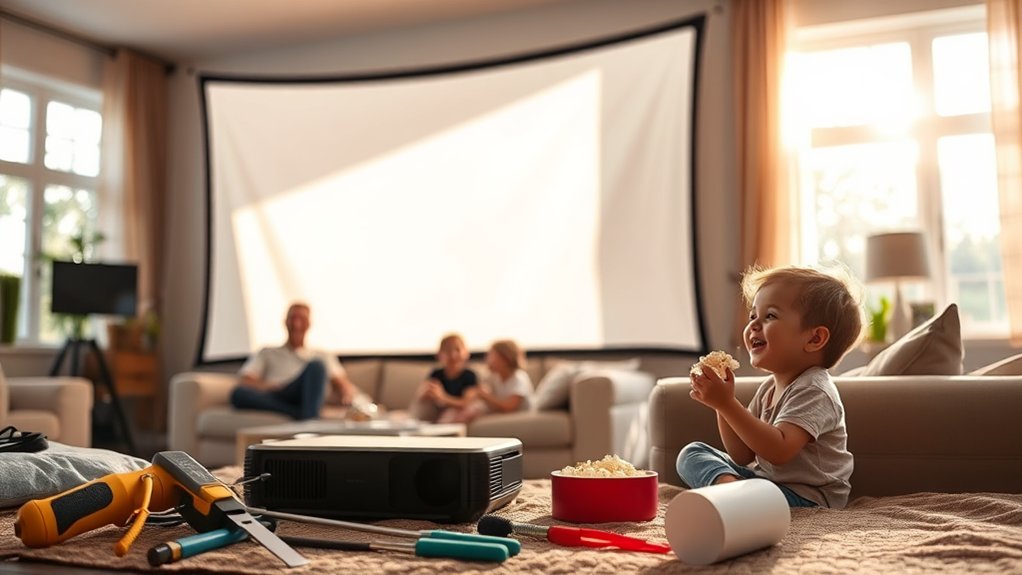
Investigating the practical uses of white fabric in budget screens reveals a wealth of real-world applications that showcase its versatility and effectiveness.
For instance, many DIY enthusiasts achieve great results using inexpensive white plastic tablecloths or light gray tulle, particularly in dark environments where image quality shines. Schools and nonprofits even prioritize these fabrics, finding that they improve readability for educational presentations during cost-saving measures.
Furthermore, companies like AtmosFX offer pre-cut white screens that strike a fantastic balance between quality and affordability, making them accessible for most consumers.
Let’s face it—who doesn’t want a budget-friendly solution that doesn’t skimp on visual performance?
In short, white fabric screens excel in a myriad of settings, delivering solid images without breaking the bank.
Frequently Asked Questions
Can I Use White Fabric Outdoors for Projection Screens?
Yes, you can use white fabric outdoors for projection screens. It offers great light diffusion, reduces reflection hotspots, and often features weather-resistant properties, ensuring durability and quality images in various outdoor lighting conditions.
How Do I Clean and Maintain White Fabric Screens?
To clean and maintain white fabric screens, vacuum regularly, spot clean stains gently with diluted vinegar, and avoid harsh chemicals. Always let the screen dry completely after cleaning to prevent dampness damage and maintain its integrity.
What Are the Best Projectors for Use With White Fabric Screens?
When choosing projectors for white fabric screens, consider models compatible with Ultra Short Throw, Short Throw, and Standard projectors. High-resolution options like 4K Ultra HD and HDR are perfect to improve your viewing experience.
Are There Any Drawbacks to Using White Fabric Screens?
Yes, there are drawbacks to using white fabric screens. They tend to wash out images in bright environments, compromise color saturation, and may cause glare, negatively impacting your viewing experience during presentations or movie nights.
How Does Light Color Affect White Fabric Screen Performance?
Light color greatly impacts white fabric screen performance. It reflects the full visible spectrum, ensuring accurate color reproduction. A neutral tone in the fabric prevents bias, maintaining vibrancy and contrast for ideal viewing experiences.

